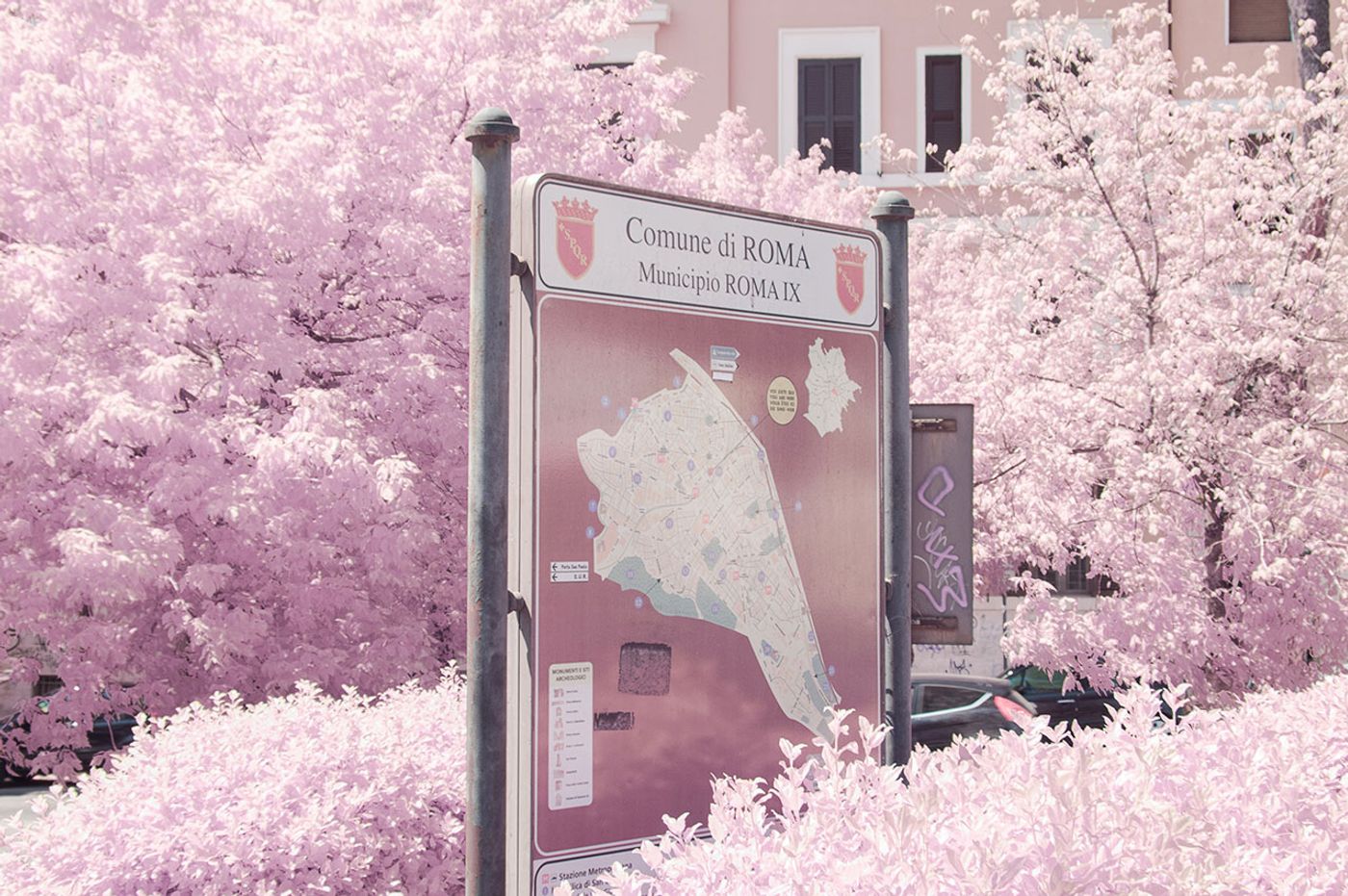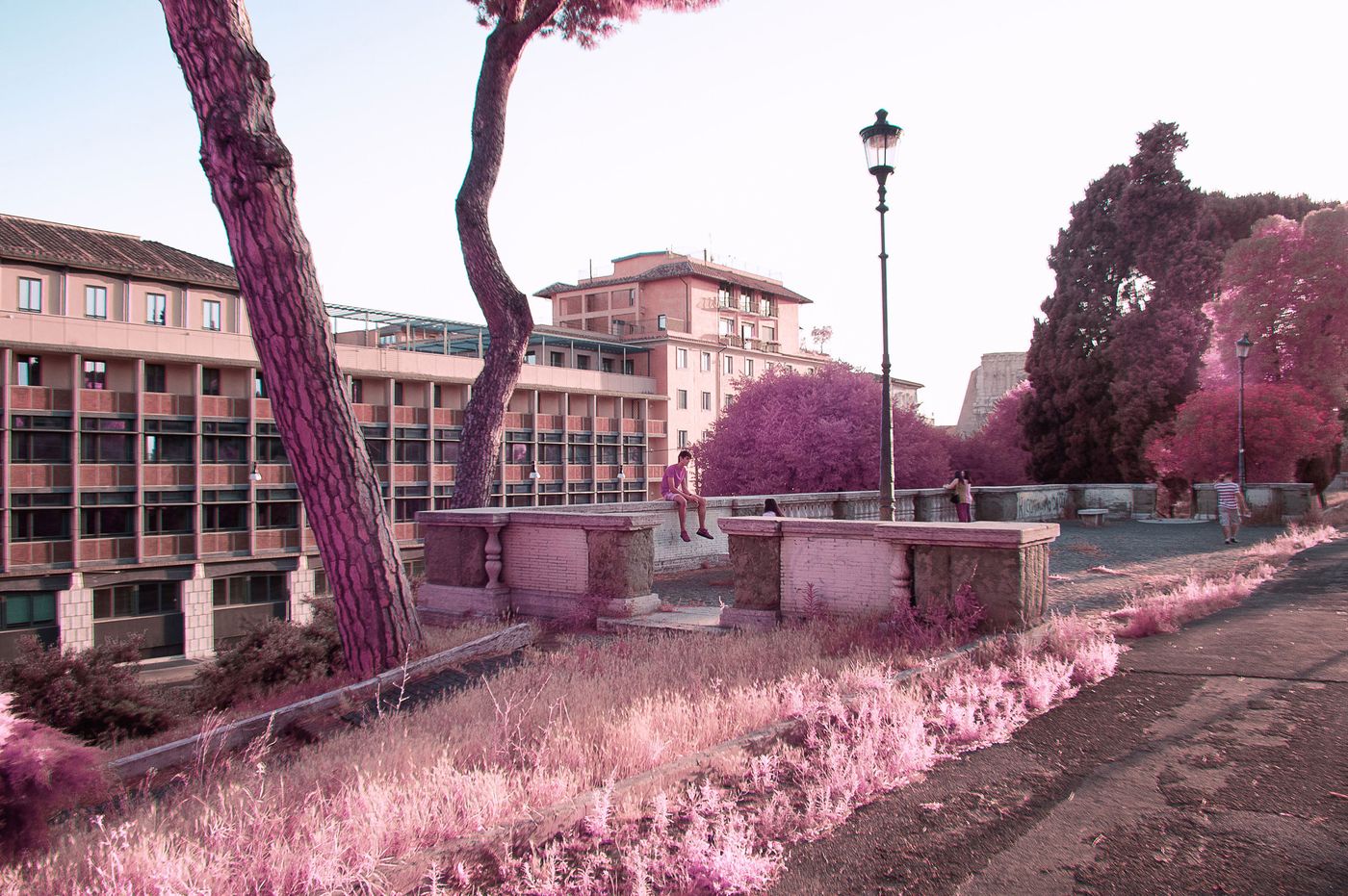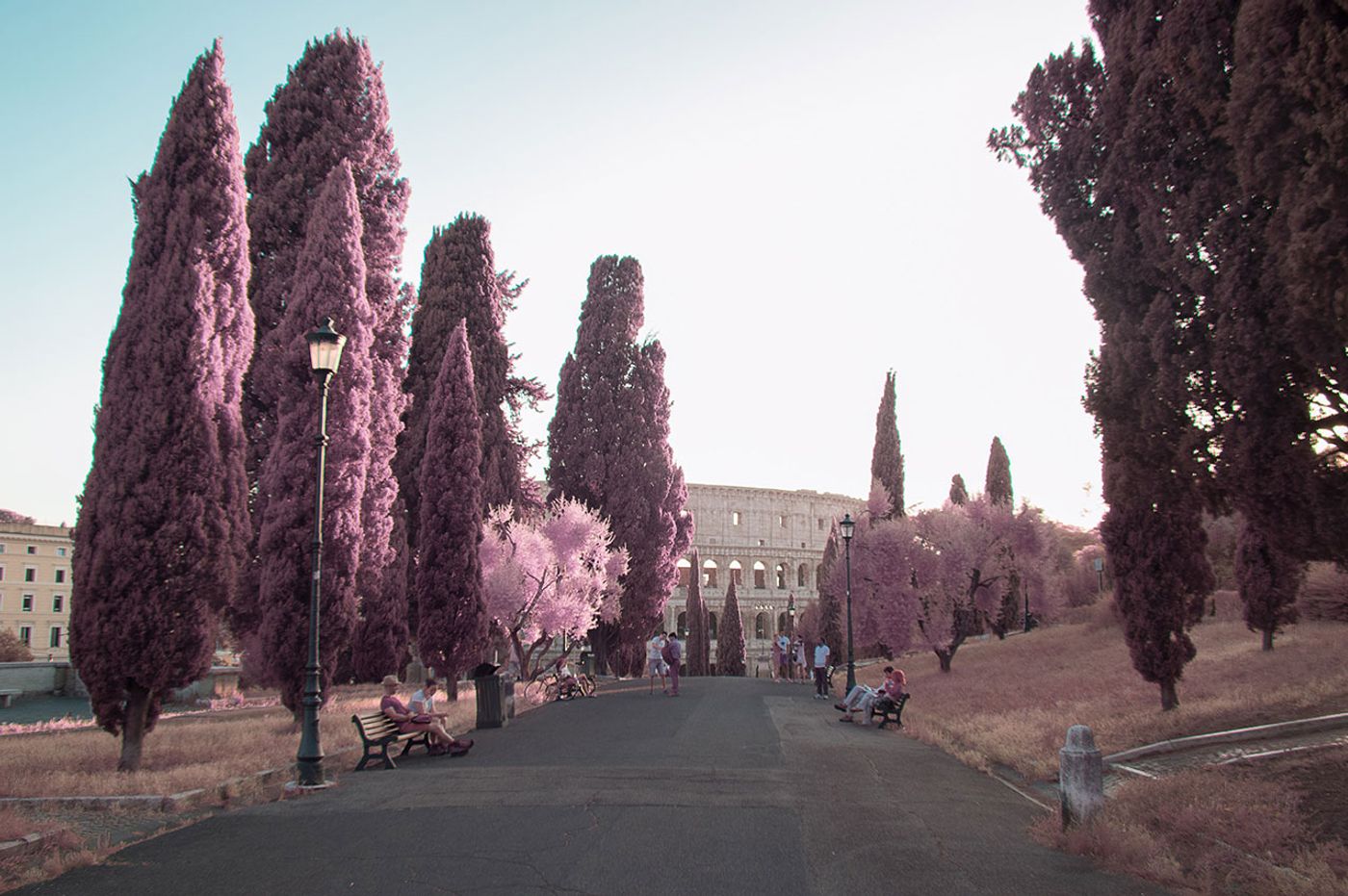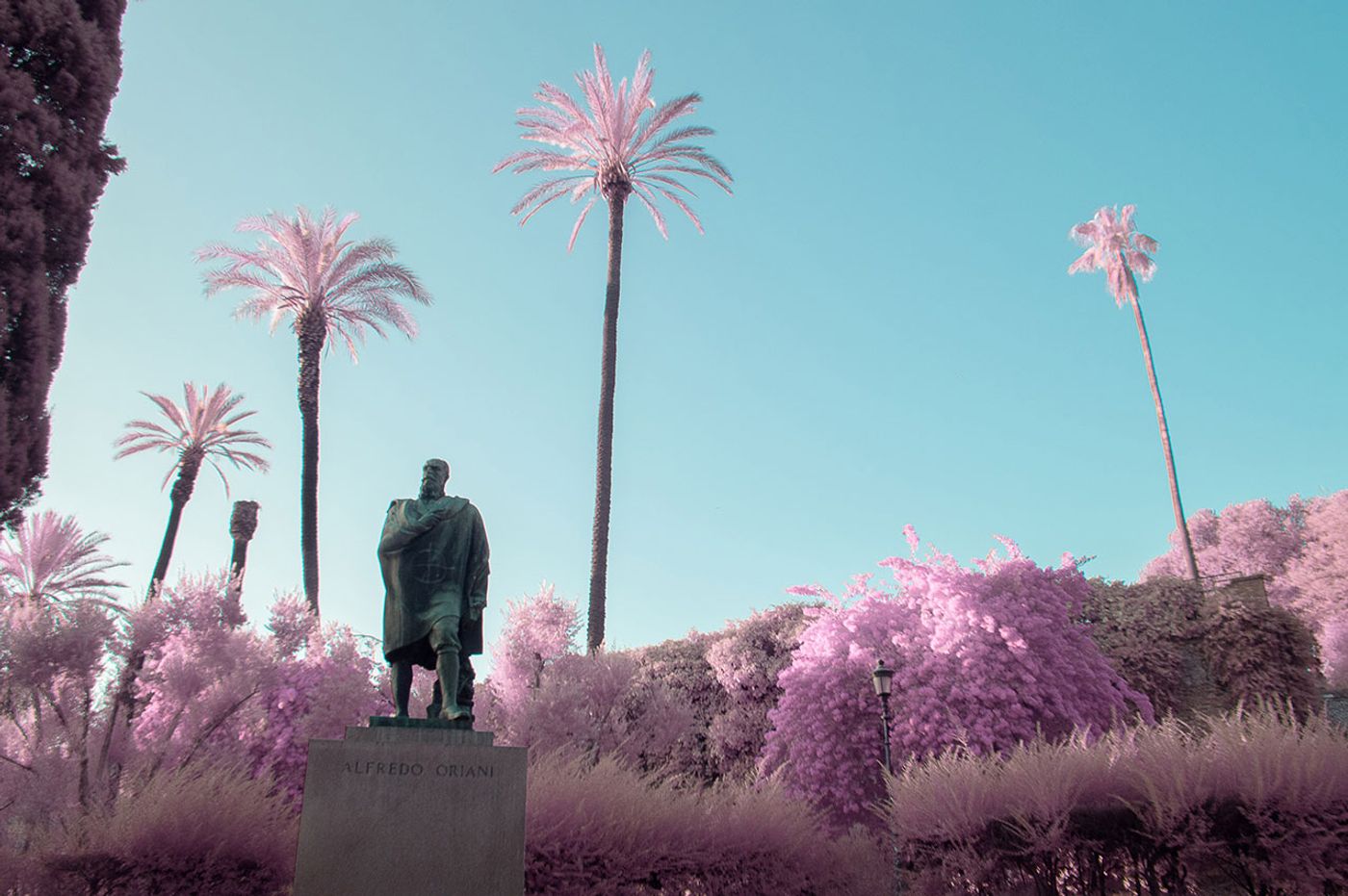
Rome in Infrared: Viewing the Eternal City Through the Looking Glass
Words by Eric David
Location
Rome, Italy
Rome in Infrared: Viewing the Eternal City Through the Looking Glass
Words by Eric David
Rome, Italy
Rome, Italy
Location
Taking brochure-quality pictures of scenic cities such as Rome used to be the prerogative of professional photographers, but nowadays, what with smartphones equipped with digital cameras of ever higher resolution and a plethora of digital filters courtesy of social media applications, all you need is an iPhone, an Instagram account and a discerning eye. Enter Hungarian photographer Milán Rácmolnár who set out to capture the Eternal City as never before by converting his old Nikon D3200 into an infrared camera. The result is a photographic series of “a somewhat peculiar look”, as he describes it, which penetrates the city’s postcard-pretty appearance to expose, not unlike the proverbial rose-tinted glasses, its timeless, lambent aura.
The most distinct characteristic of infrared photography is the discoloration of vegetation from green to red- in fact, infrared photography is primarily used in aerial vegetation surveys in order to determine the health of foliage as healthy patches come up in red, while unhealthy vegetation is depicted in hues of magenta- also seen in Rácmolnár’s pictures which feature plenty of pines, cypresses and other Roman flora. Coupled with the fading blue shades of the sky and the washed out cream colors of Rome’s buildings, the pink, fuchsia and purple hues of the trees and shrubs give the pictures a dream-like, almost psychedelic sensibility that is both nostalgic, think vintage 70s photography, and at the same time otherworldly.
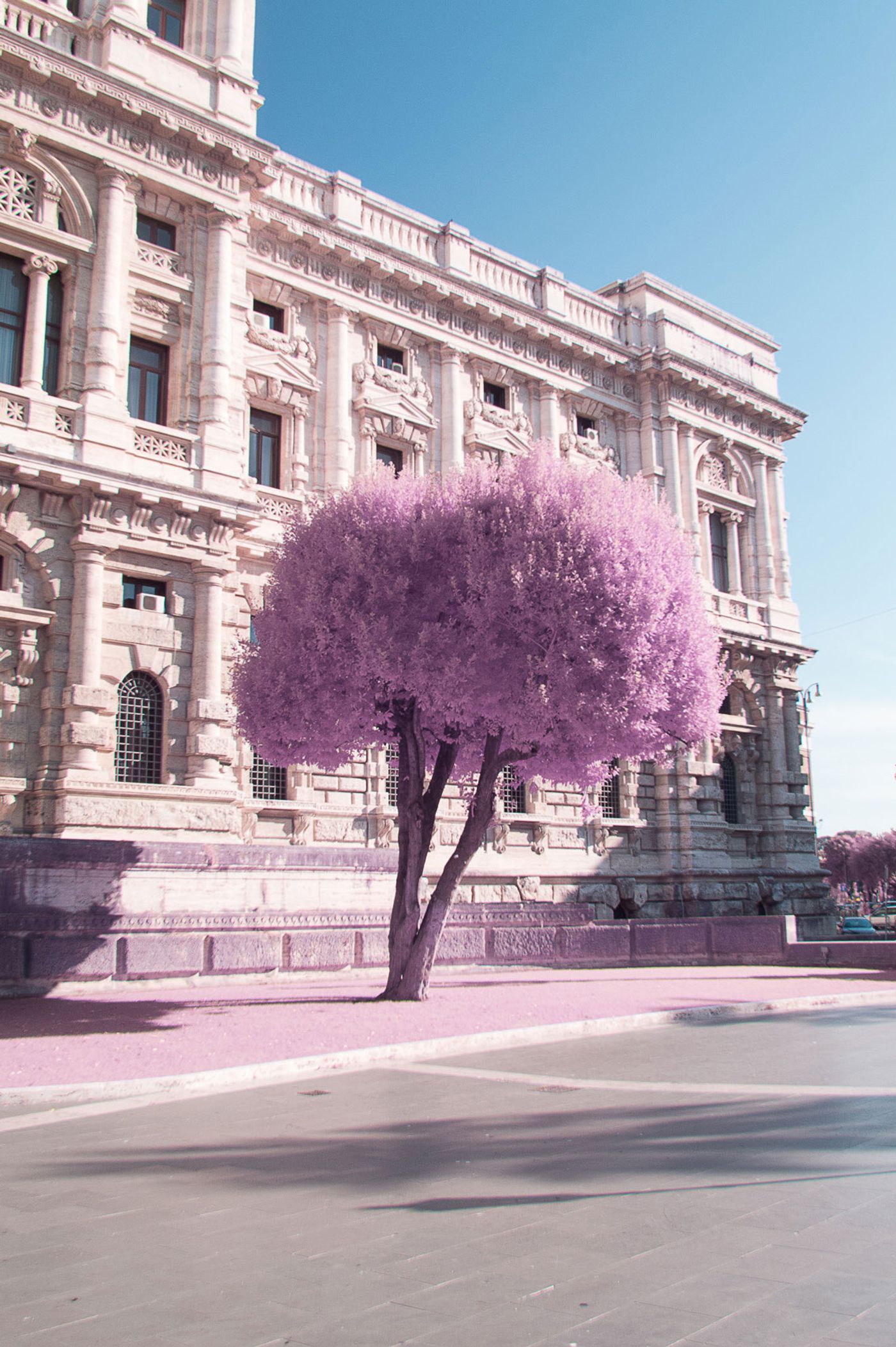
Photo © Milán Rácmolnár.
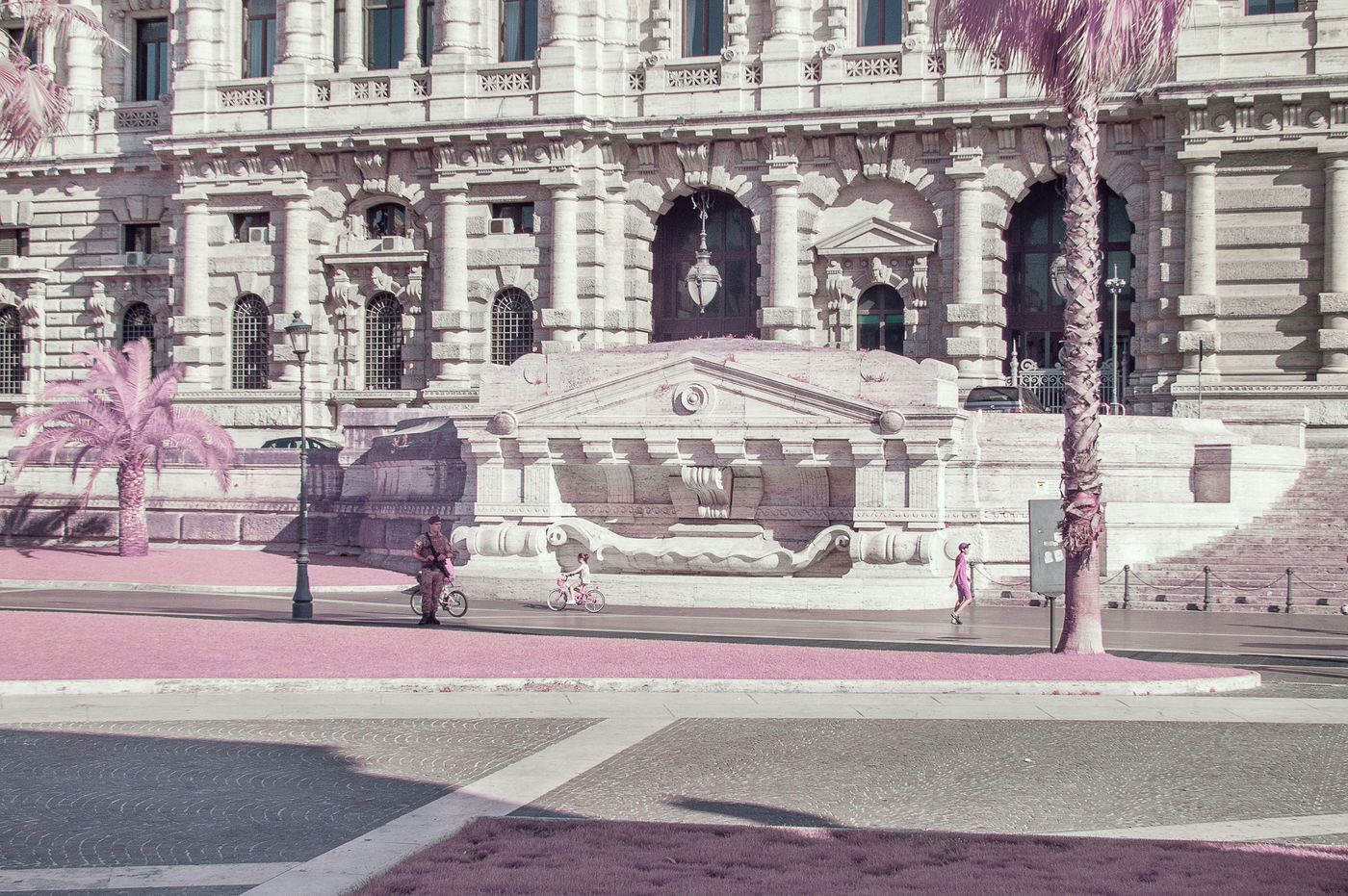
Photo © Milán Rácmolnár.
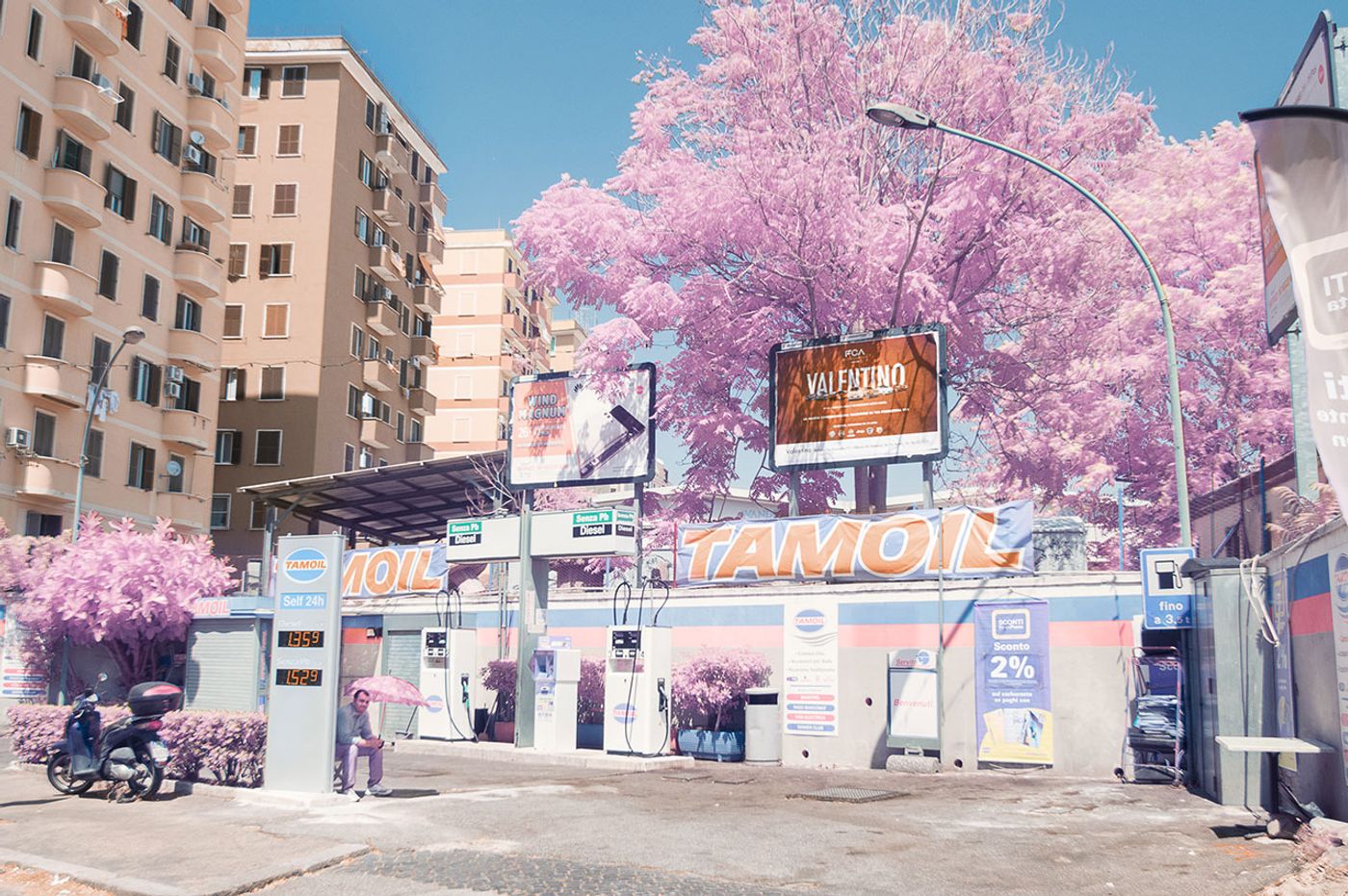
Photo © Milán Rácmolnár.

Photo © Milán Rácmolnár.
Rácmolnár eschews formalistic rules of cityscape composition, such as establishing symmetry or clear focal points, for a more spontaneous-looking aesthetic, often “haphazardly” cropping buildings, using unorthodox camera angles and incorporating intruding passersby. It’s as if the pictures were taken by an enthralled tourist on the go that can’t get enough of the city. By capturing both world-famous landmarks such as the Colosseum, the Trevi Fountain and St. Peter's Square, as well as some of the city’s less glamorous sights such as a bus stop, an out of service carousel and a gas station, with the same fervour, Rácmolnár succeeds in evoking this unique sense of wonder that Rome bestows on its visitors through his photographs. But more than this, with their unique lopsided aesthetic of unfamiliar familiarity, they also reflect Rome’s multilayered identity, a palimpsest of almost three millennia of history, rendering the invisible visible through the looking glass.
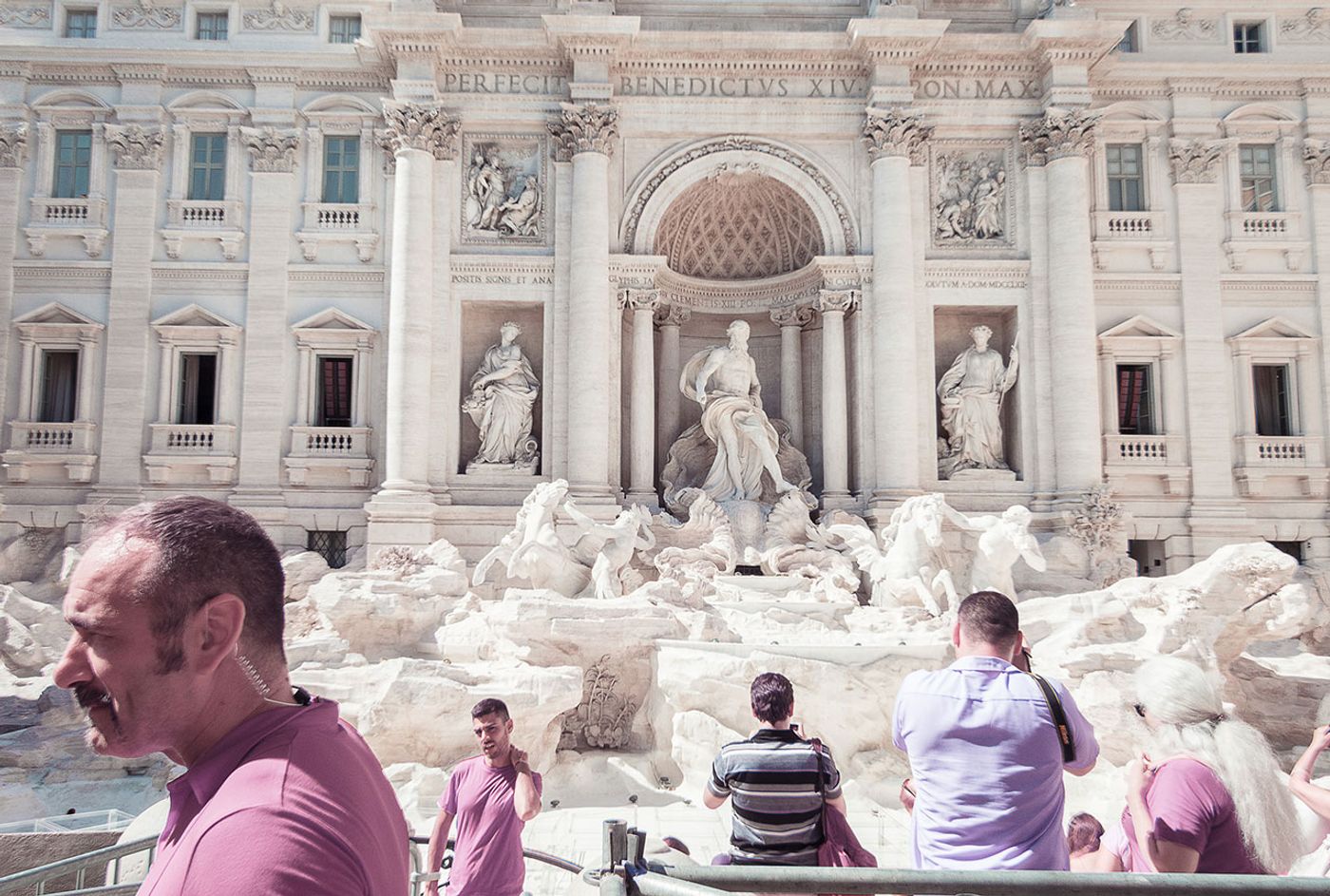
Photo © Milán Rácmolnár.

Photo © Milán Rácmolnár.
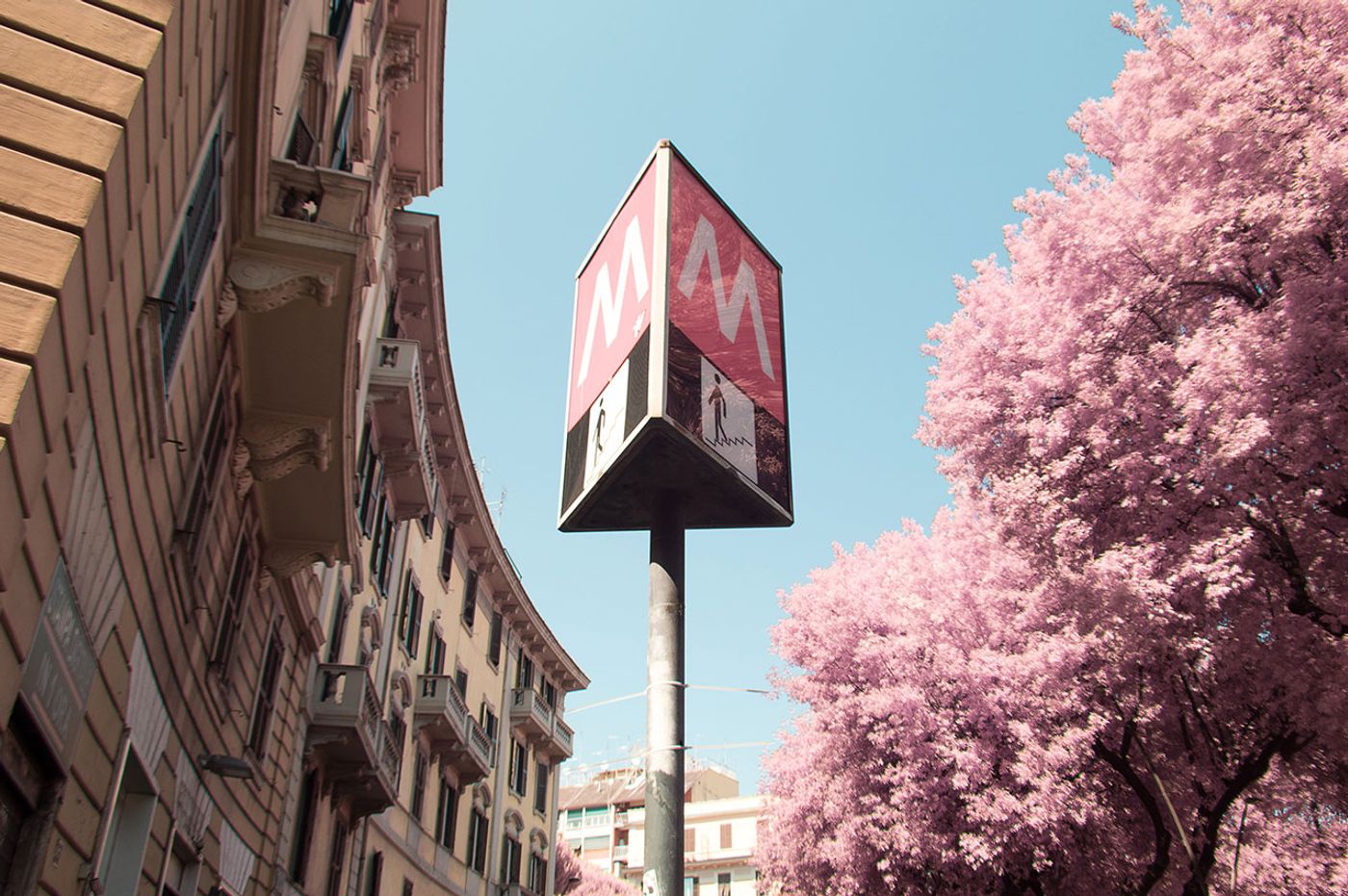
Photo © Milán Rácmolnár.

Photo © Milán Rácmolnár.
The pink, fuchsia and purple hues of the trees and shrubs give the pictures a dream-like, almost psychedelic sensibility.
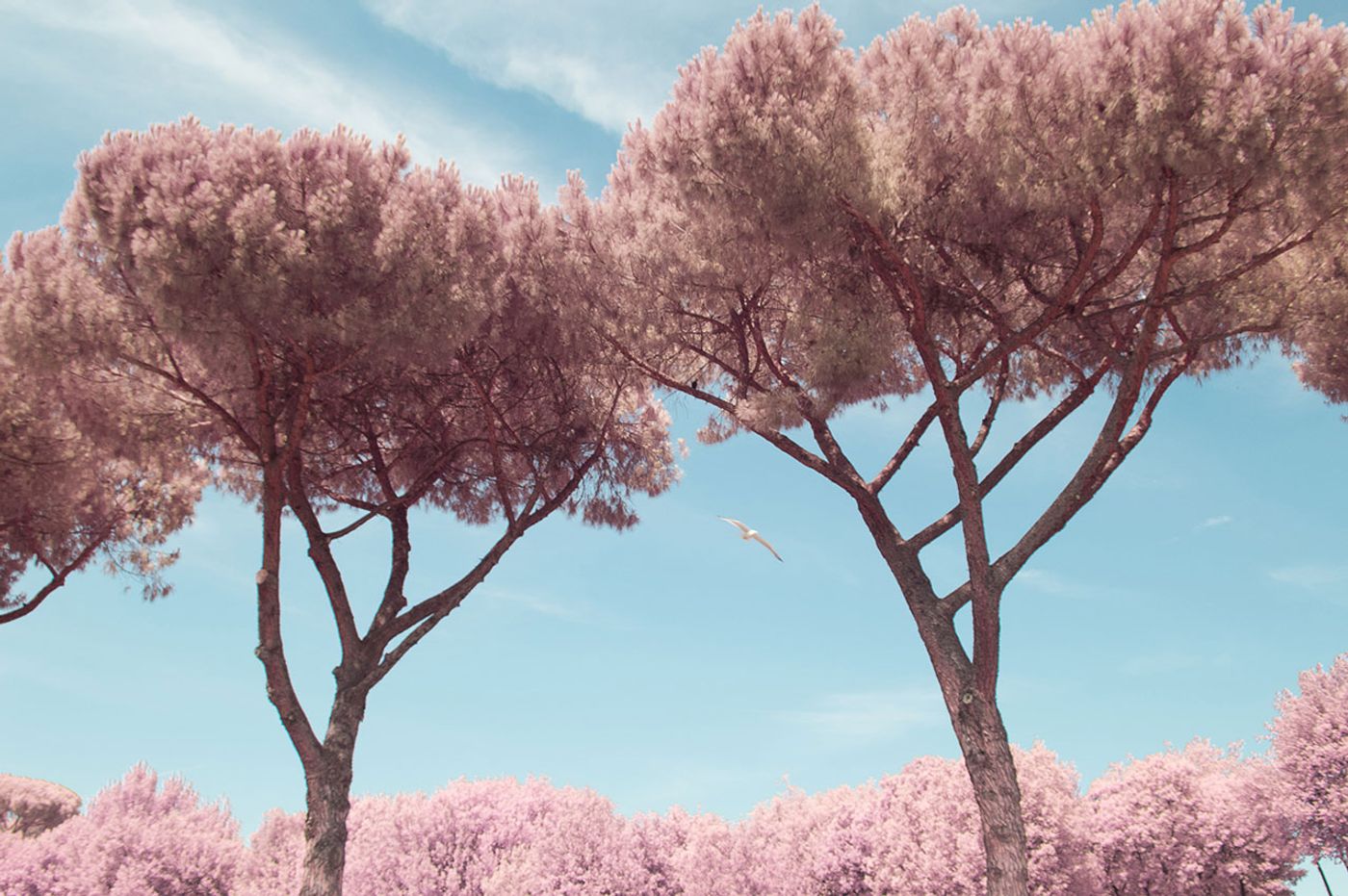
Photo © Milán Rácmolnár.

Photo © Milán Rácmolnár.
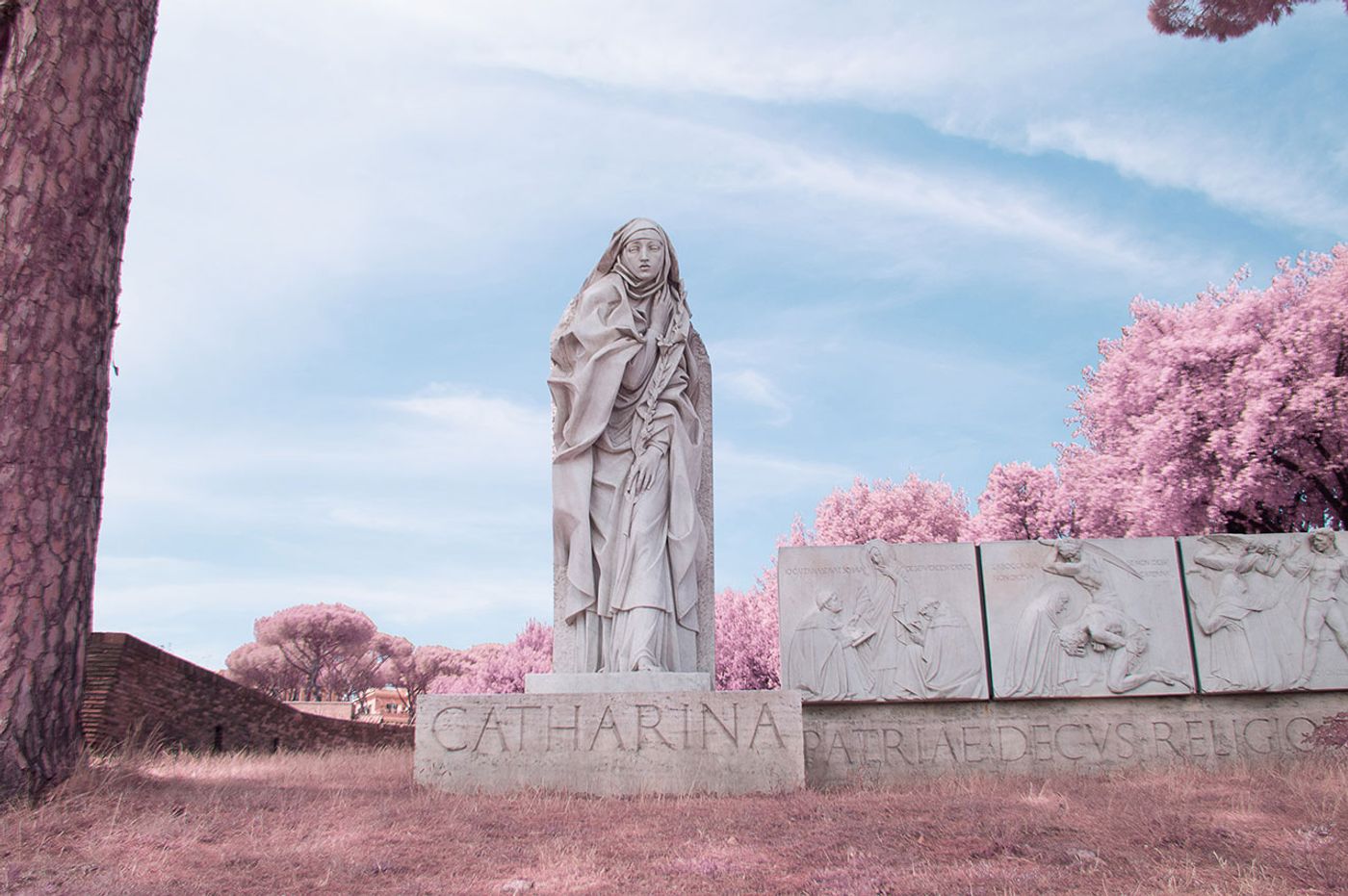
Photo © Milán Rácmolnár.

Photo © Milán Rácmolnár.

Photo © Milán Rácmolnár.
